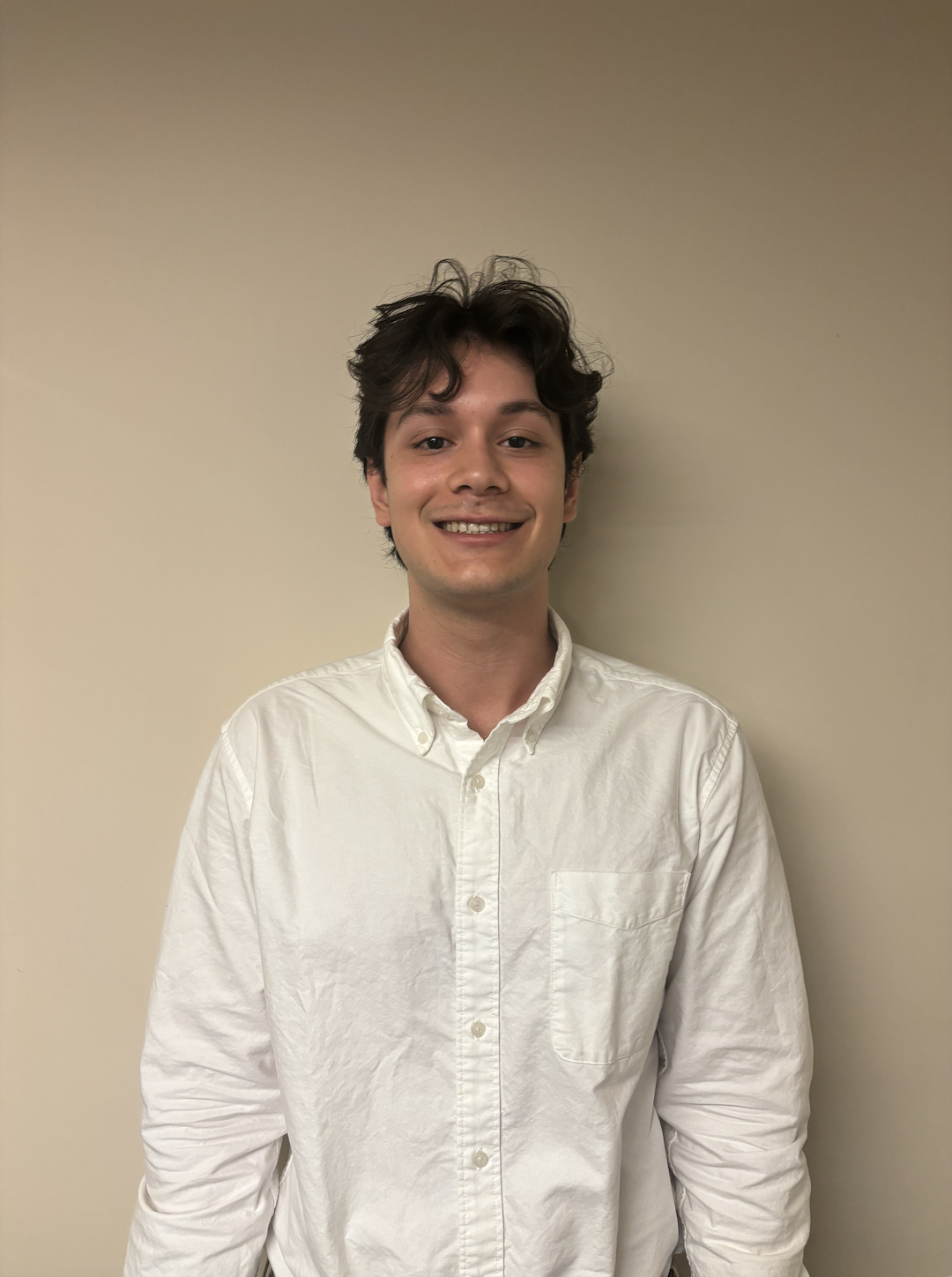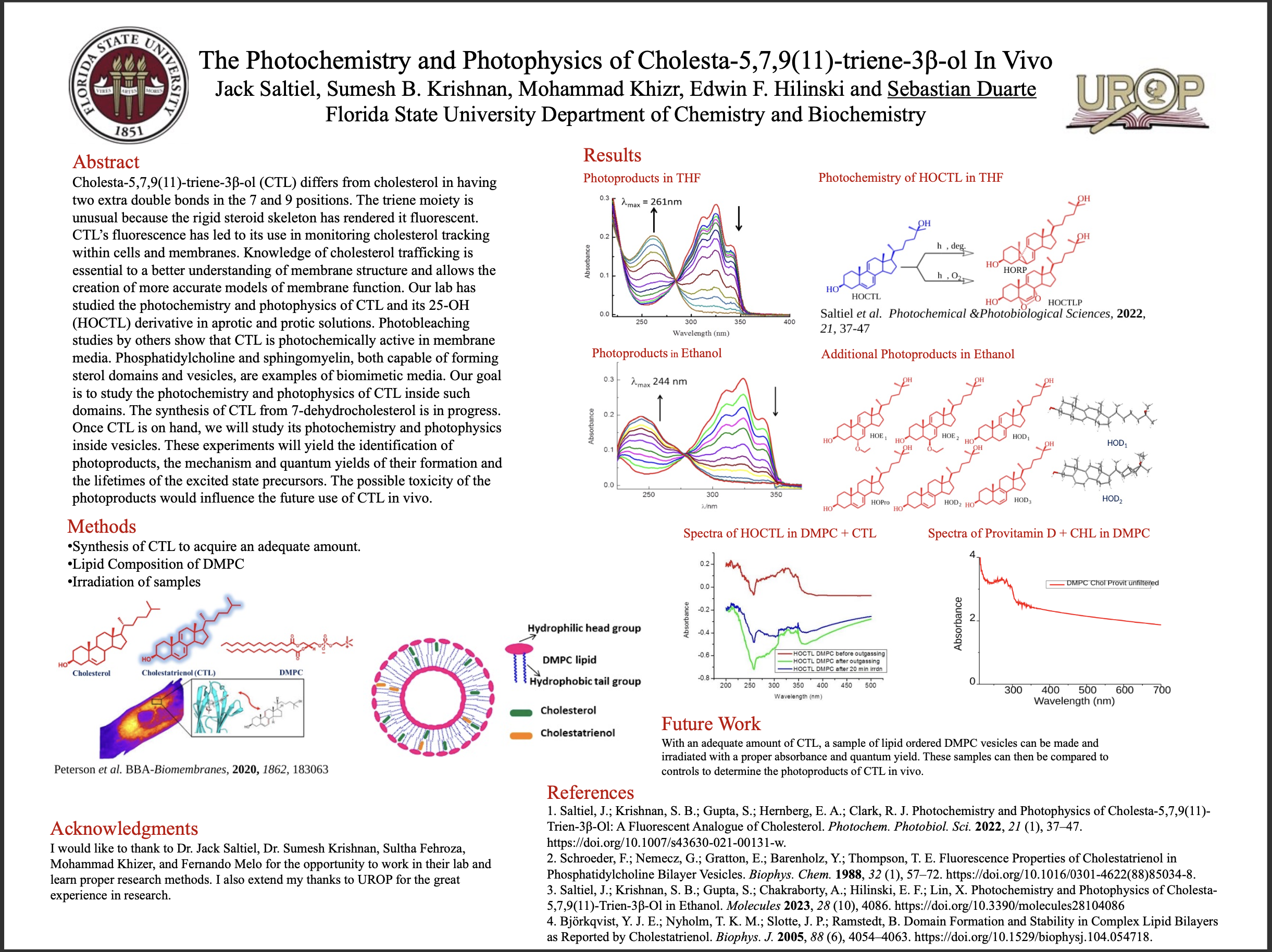Research Symposium
24th annual Undergraduate Research Symposium, April 3, 2024
Sebastian Duarte Poster Session 4: 2:45 pm - 3:45 pm /268

BIO
I am a student from Fort Lauderdale, Fl, studying Chemical Engineering at the FAMU-FSU College of Engineering. Despite loving engineering and design, I still have unfilled interests in the natural sciences, specifically chemistry and physics. In order to pursue a deeper understanding of the natural sciences I decided to conduct research in photochemistry. Photochemistry is a relatively new field which combines chemistry and physics to understand the effect of light on reactions and materials. Working in this field has allowed me to learn more about chemistry than most classes I have taken so far. In the future I hope to combine my knowledge in the natural sciences and engineering to develop instruments and methodology for research. Besides engineering and chemistry, I also have a passion for computer science and coding. To follow this passion I am pursuing a minor in computer science.
The Photochemistry and Photophysics of Cholesta-5,7,9(11)-triene-3β-ol In Vivo
Authors: Sebastian Duarte, Jack SaltielStudent Major: Chemical Engineering
Mentor: Jack Saltiel
Mentor's Department: Department of Chemistry and Biochemistry Mentor's College: College of Arts and Sciences Co-Presenters:
Abstract
Cholesta-5,7,9(11)-triene-3β-ol (CTL) differs from cholesterol in having two extra double bonds in the 7 and 9 positions. The triene moiety is unusual because the rigid steroid skeleton has rendered it fluorescent. CTL’s fluorescence has led to its use in monitoring cholesterol tracking within cells and membranes. Knowledge of cholesterol trafficking is essential to a better understanding of membrane structure and allows the creation of more accurate models of membrane function. Our lab has studied the photochemistry and photophysics of CTL and its 25-OH (HOCTL) derivative in aprotic and protic solutions. Photobleaching studies by others show that CTL is photochemically active in membrane media. Phosphatidylcholine and sphingomyelin, both capable of forming sterol domains and vesicles, are examples of biomimetic media. Our goal is to study the photochemistry and photophysics of CTL inside such domains. The synthesis of CTL from 7-dehydrocholesterol is in progress. Once CTL is on hand, we will study its photochemistry and photophysics inside vesicles. These experiments will yield the identification of photoproducts, the mechanism and quantum yields of their formation and the lifetimes of the excited state precursors. The possible toxicity of the photoproducts would influence the future use of CTL in vivo.
Keywords: photophysics, photochemistry, chemistry


